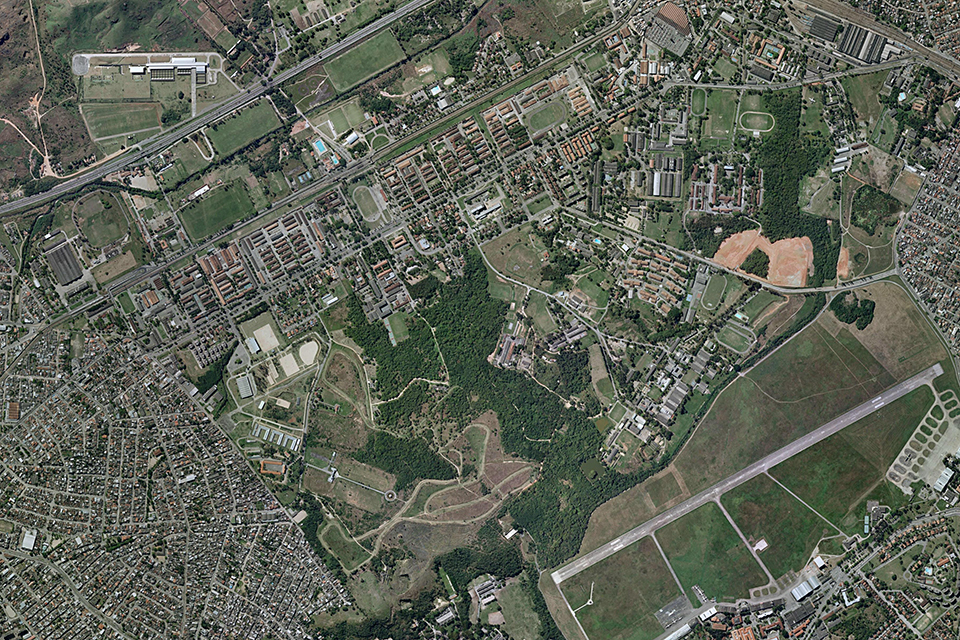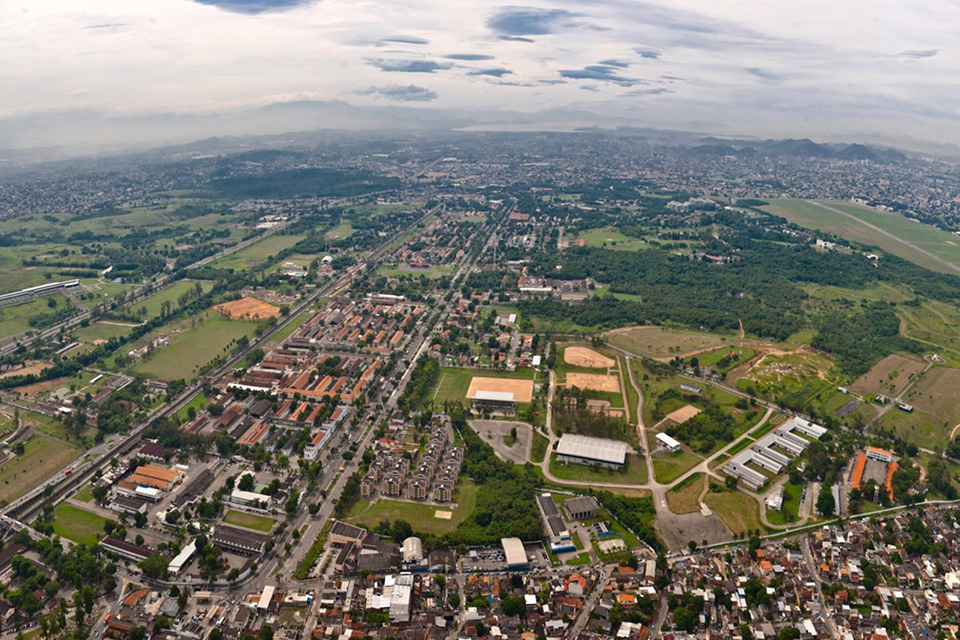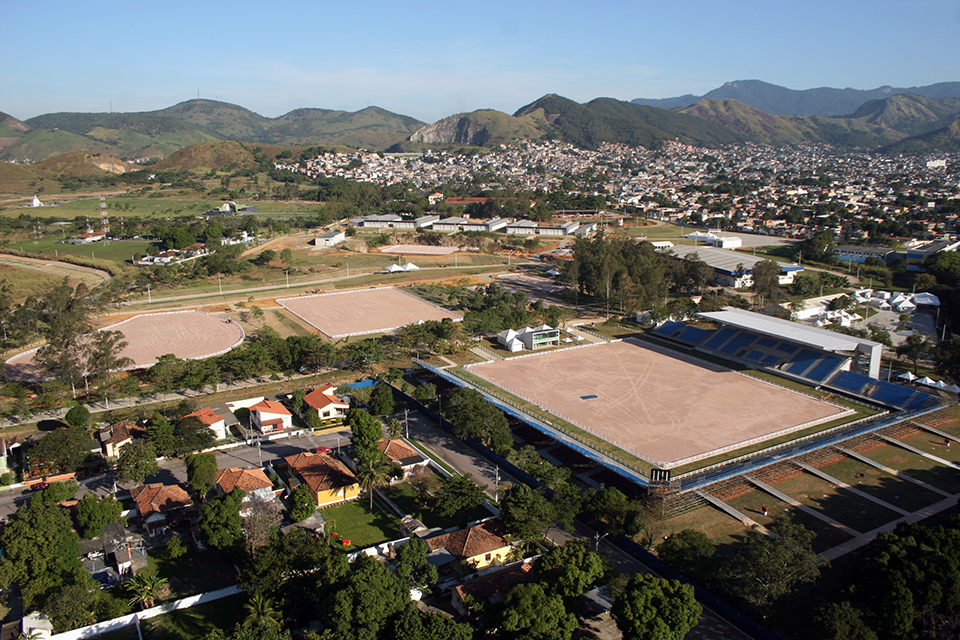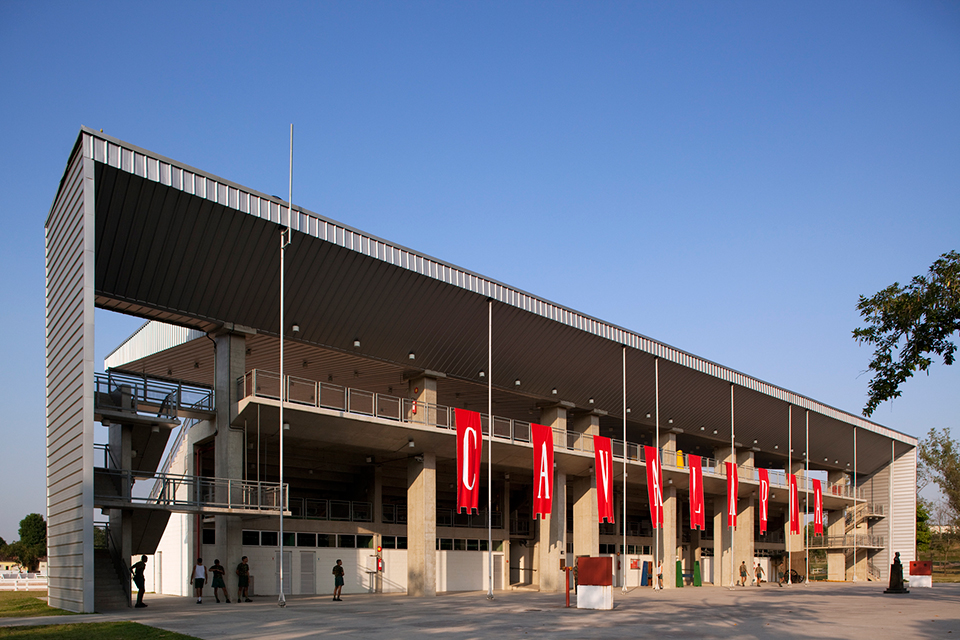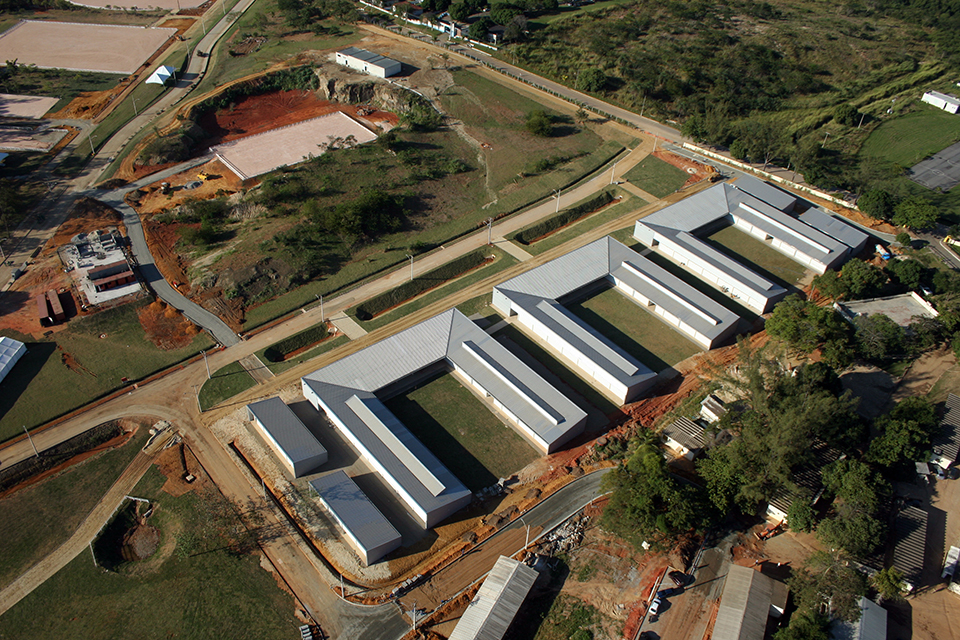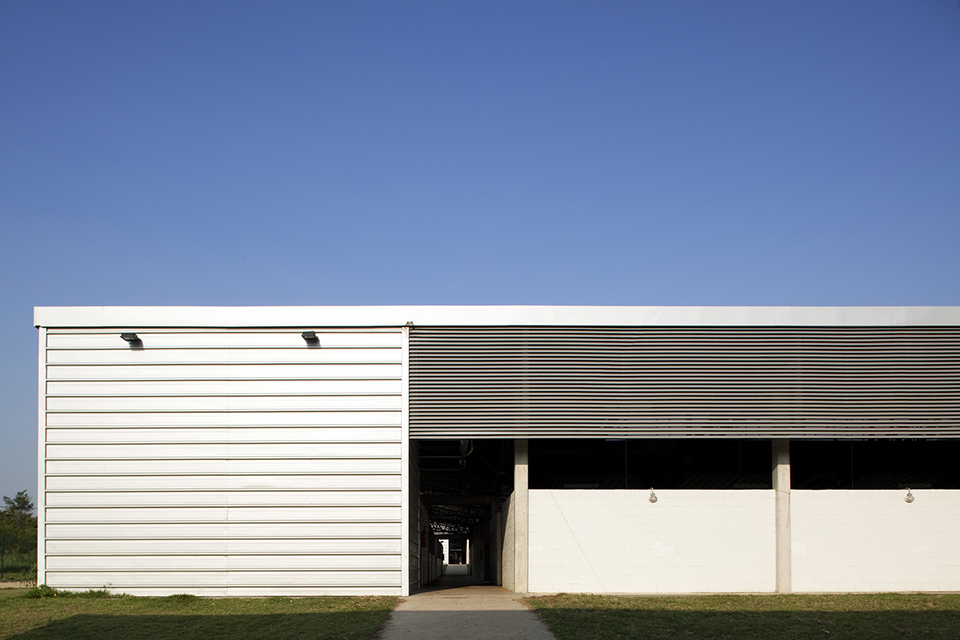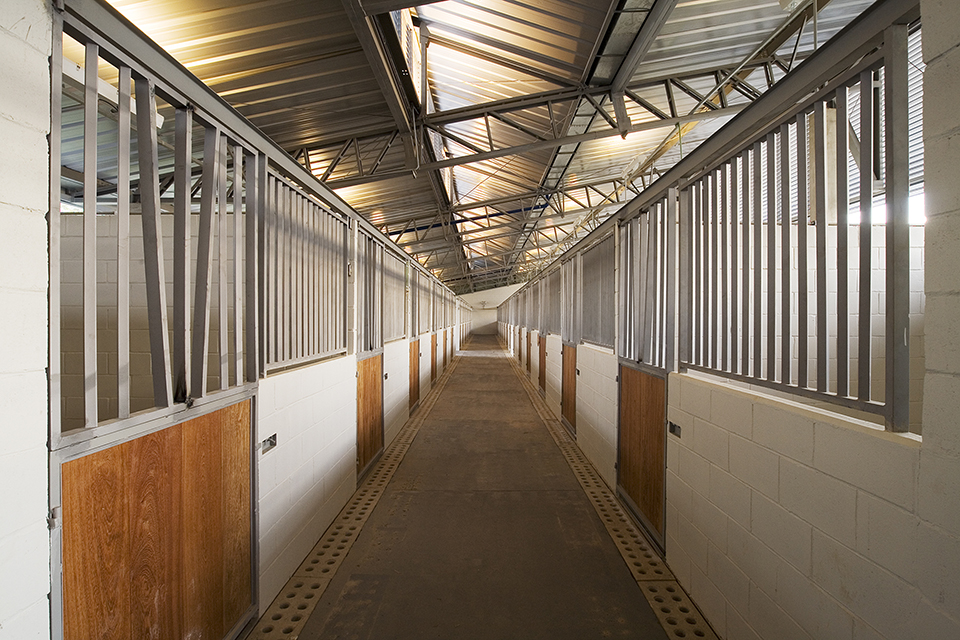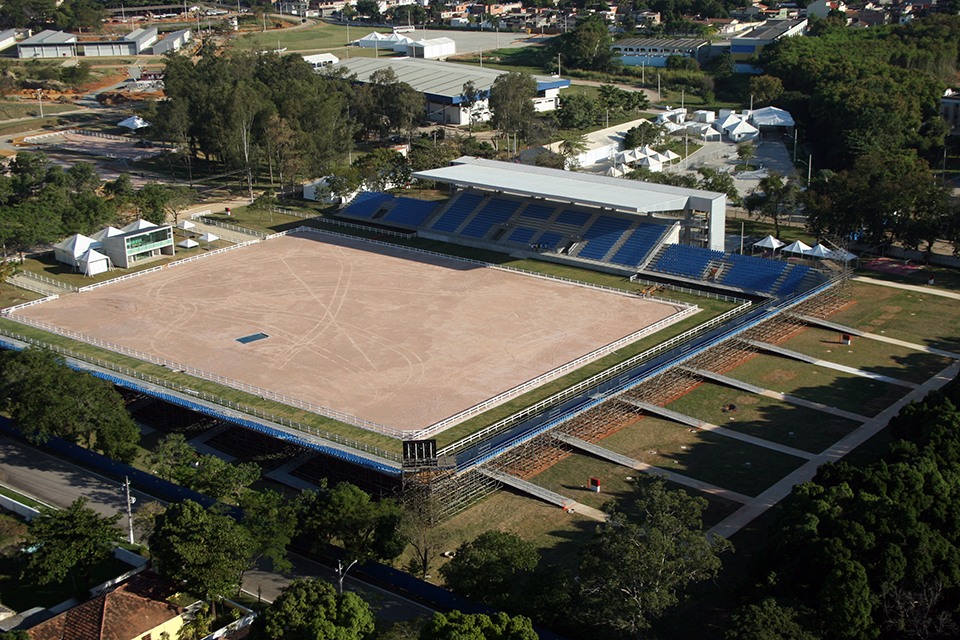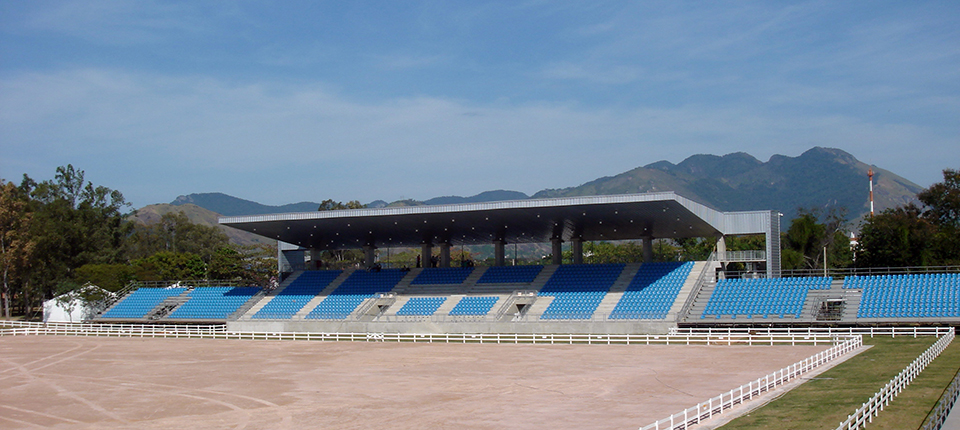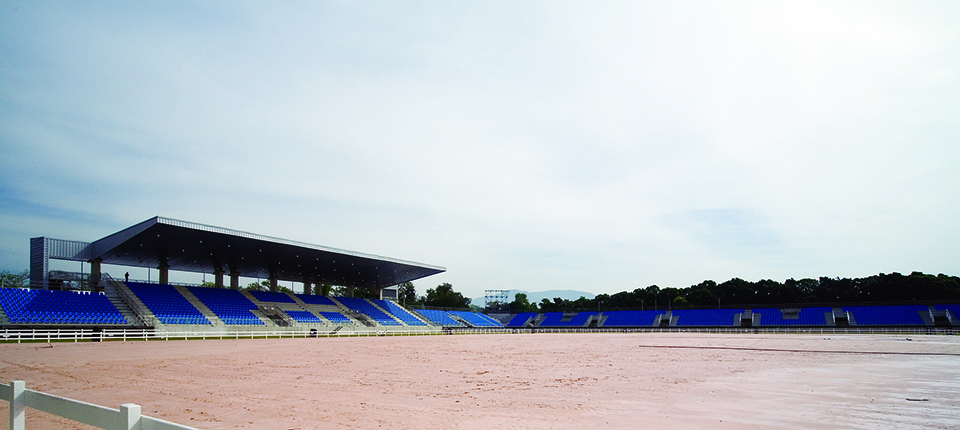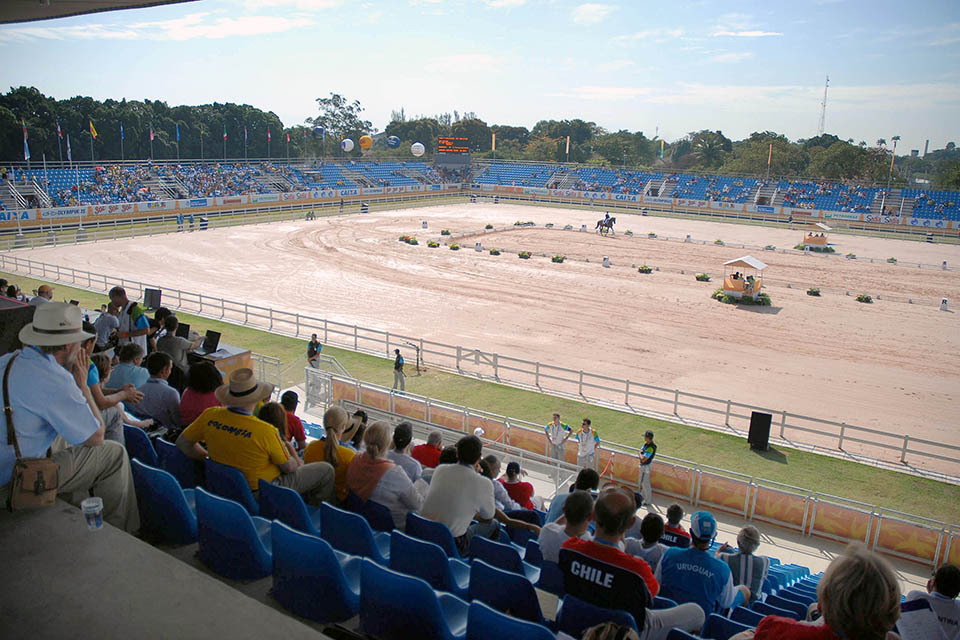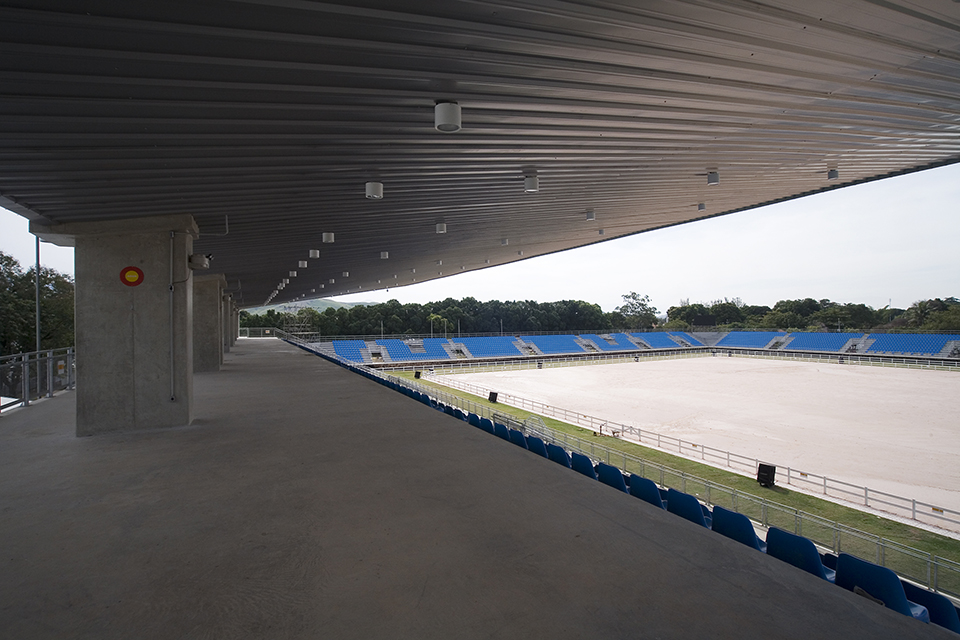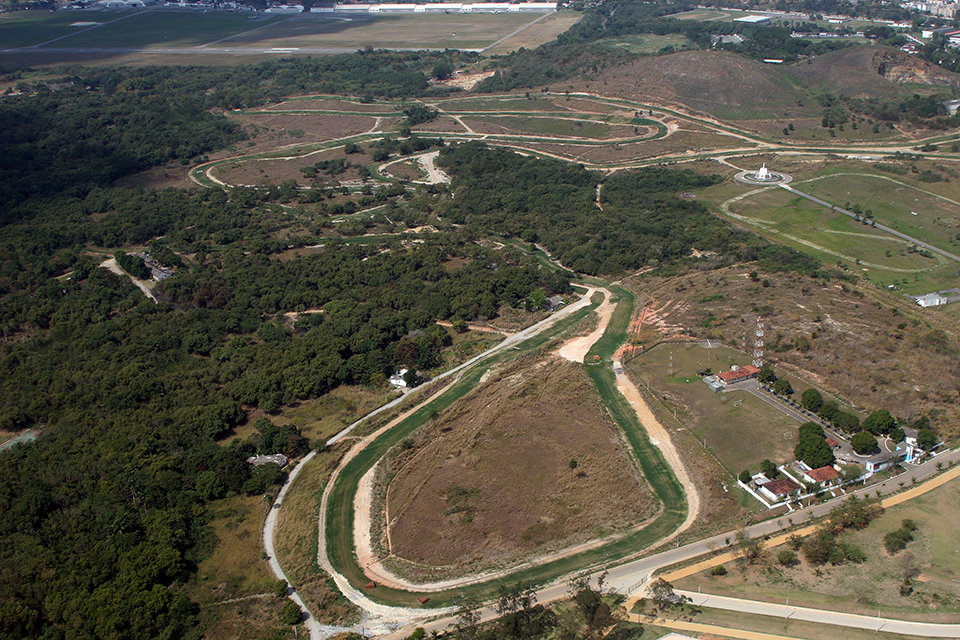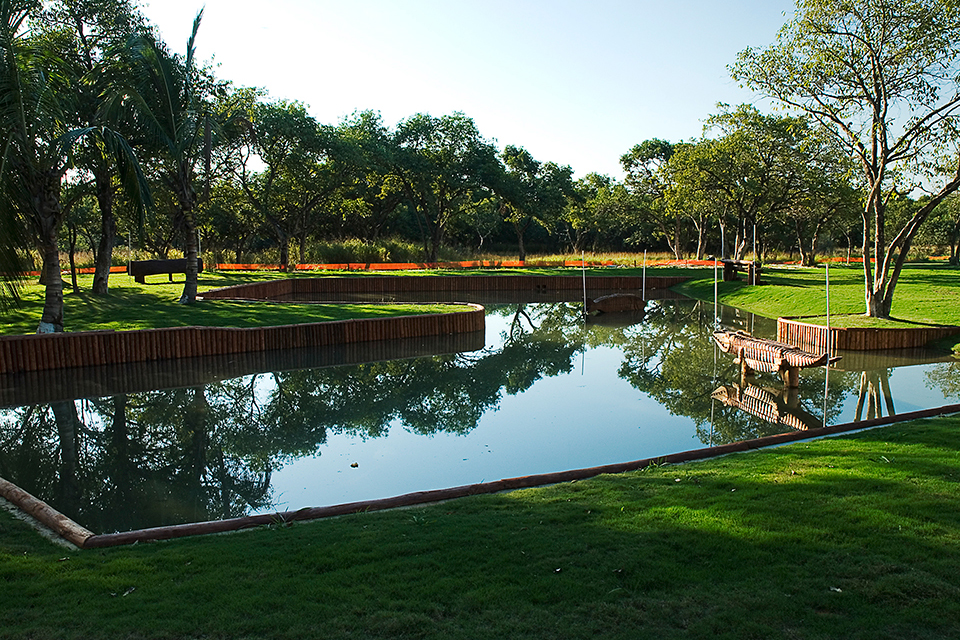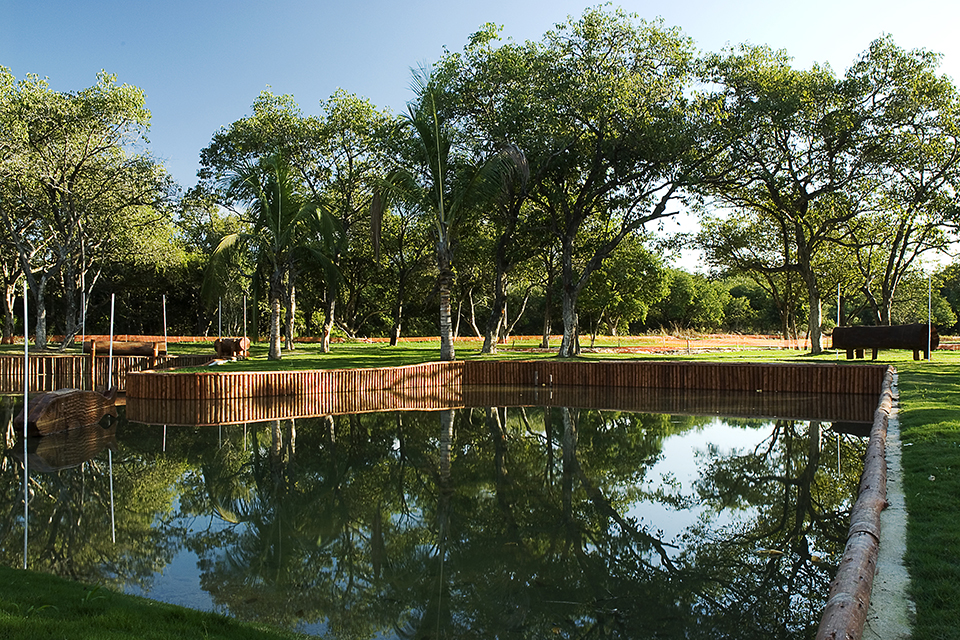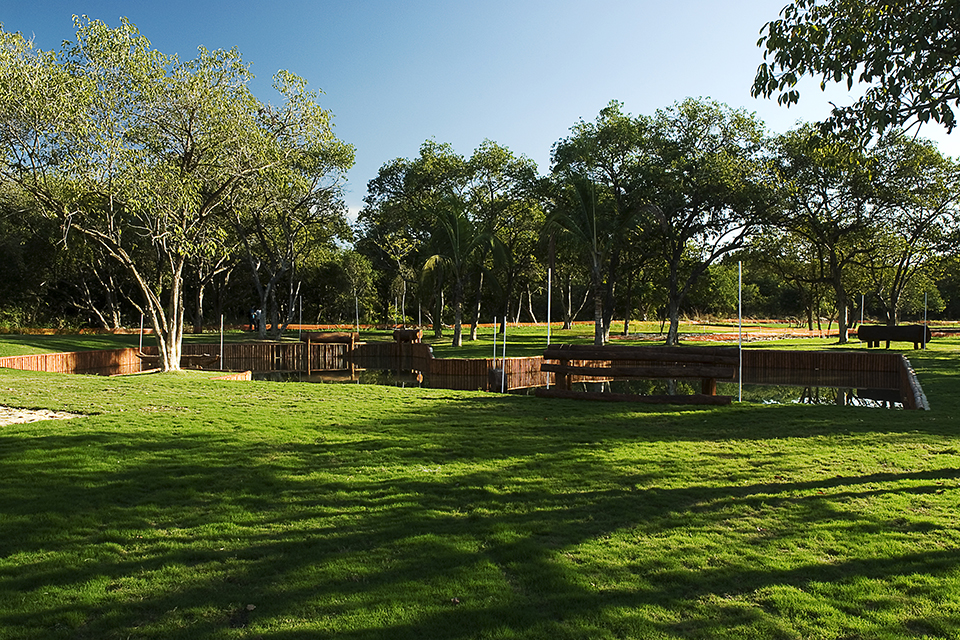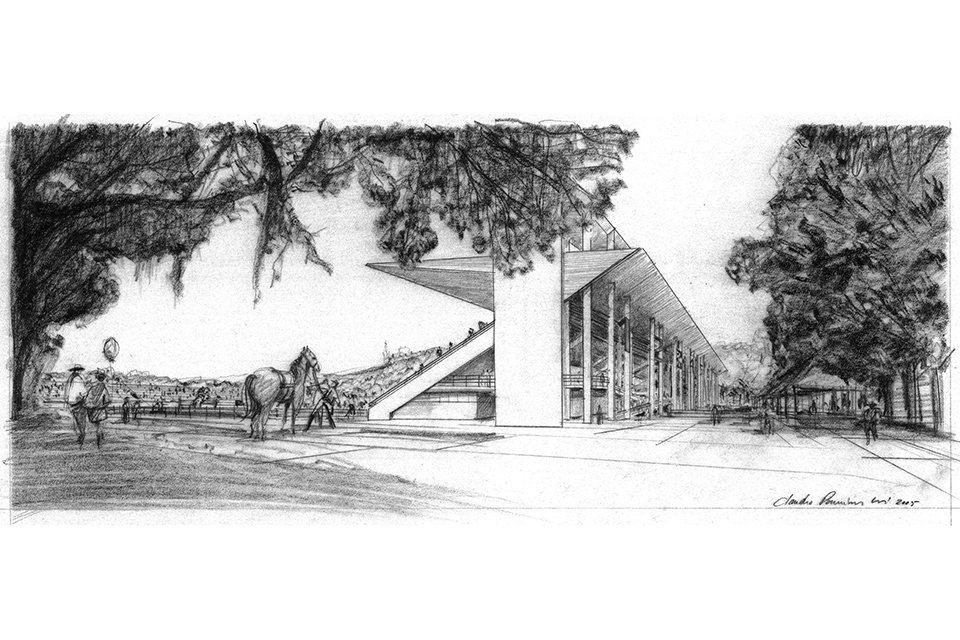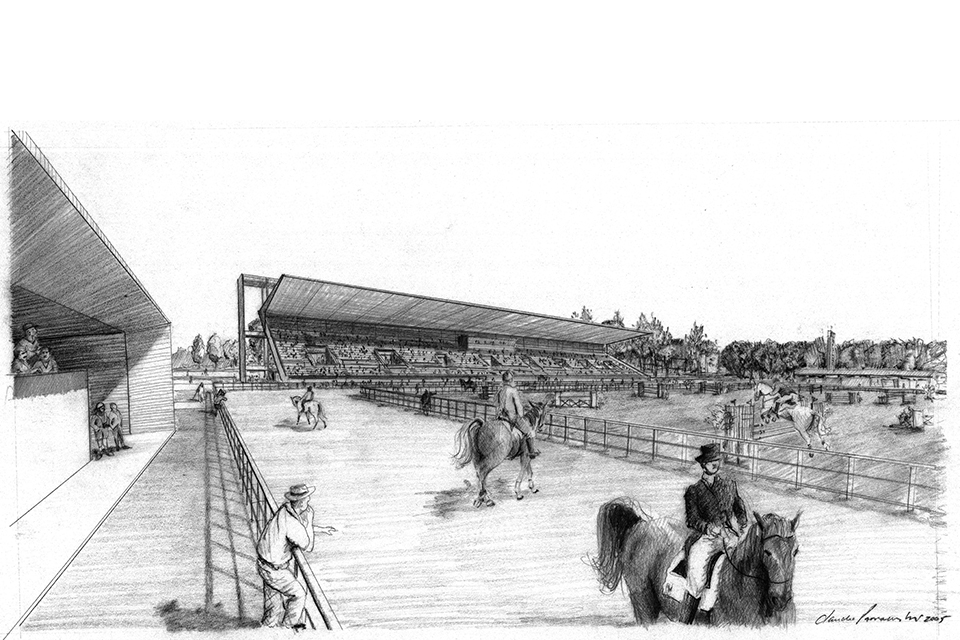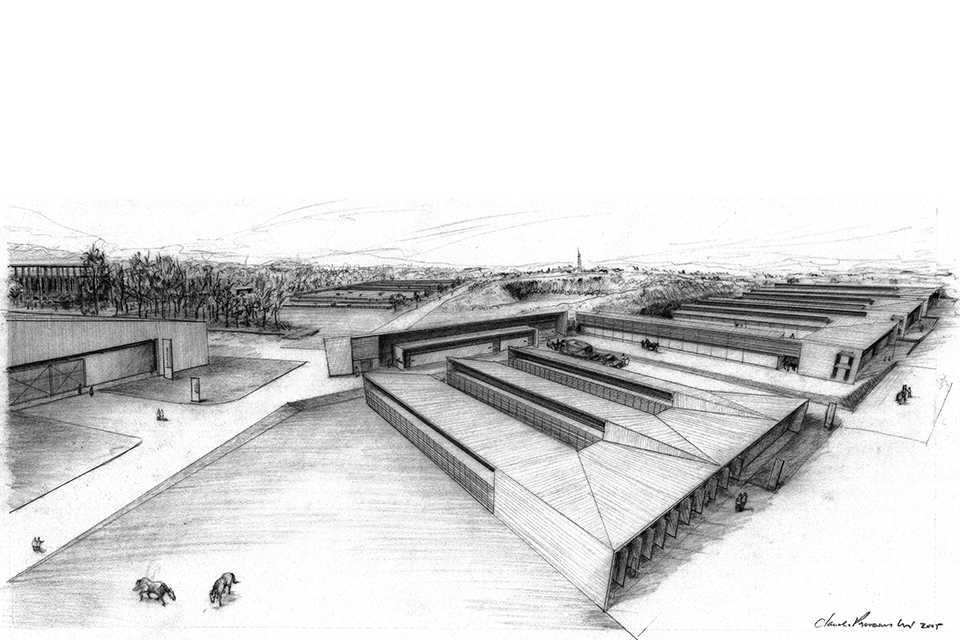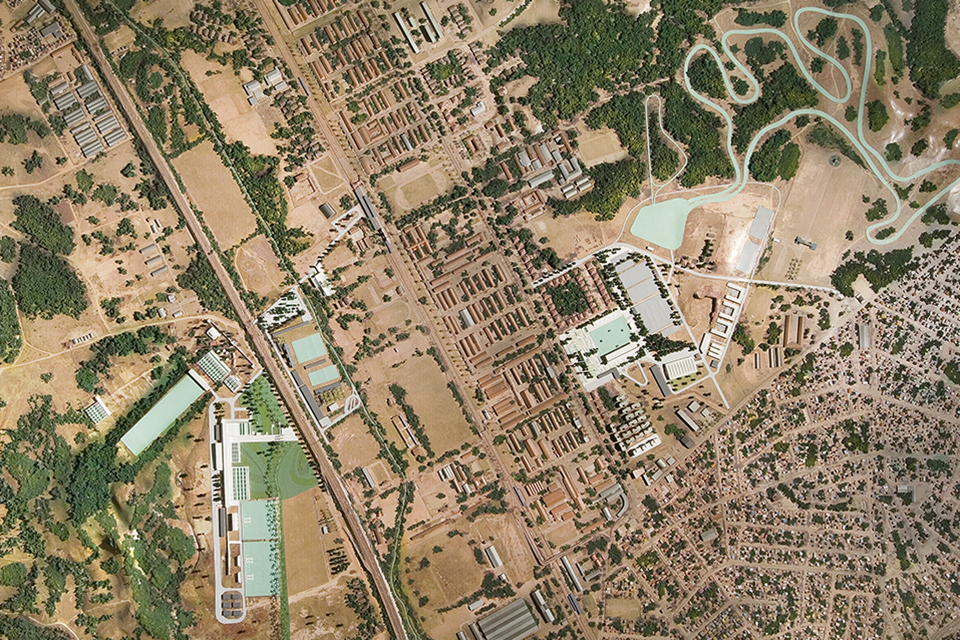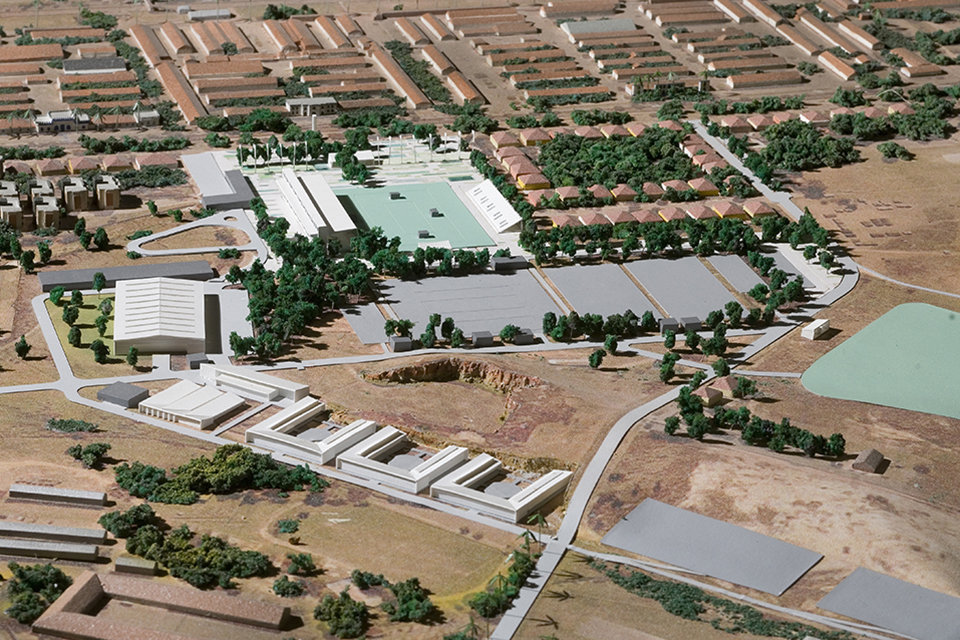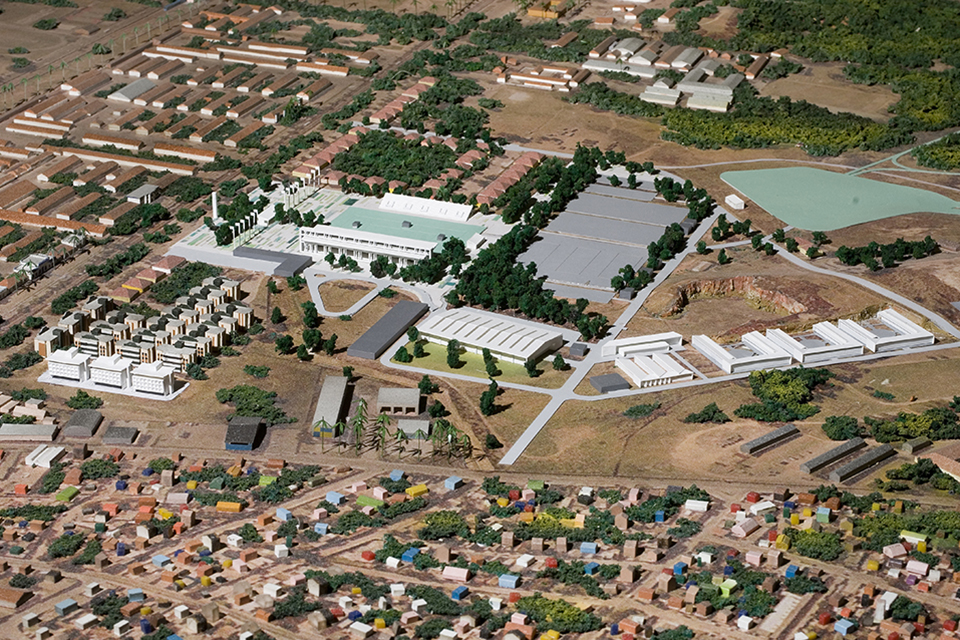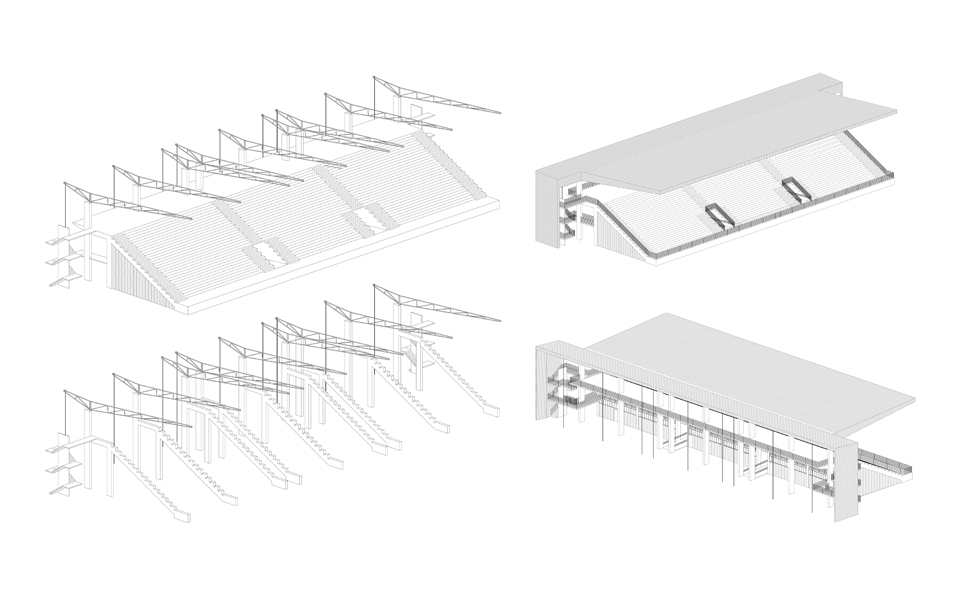Pan 2007 - Equestrian Center
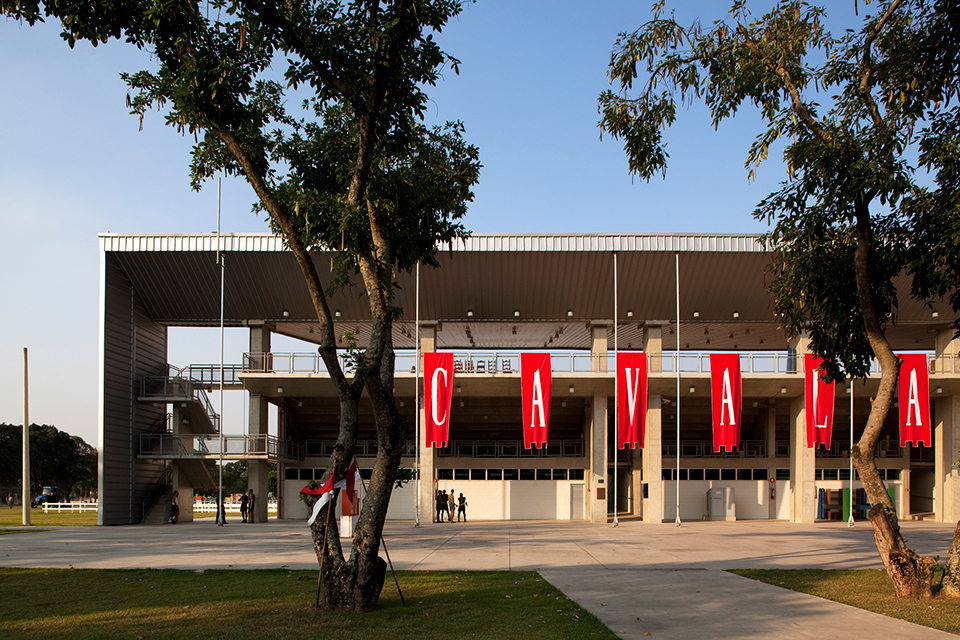
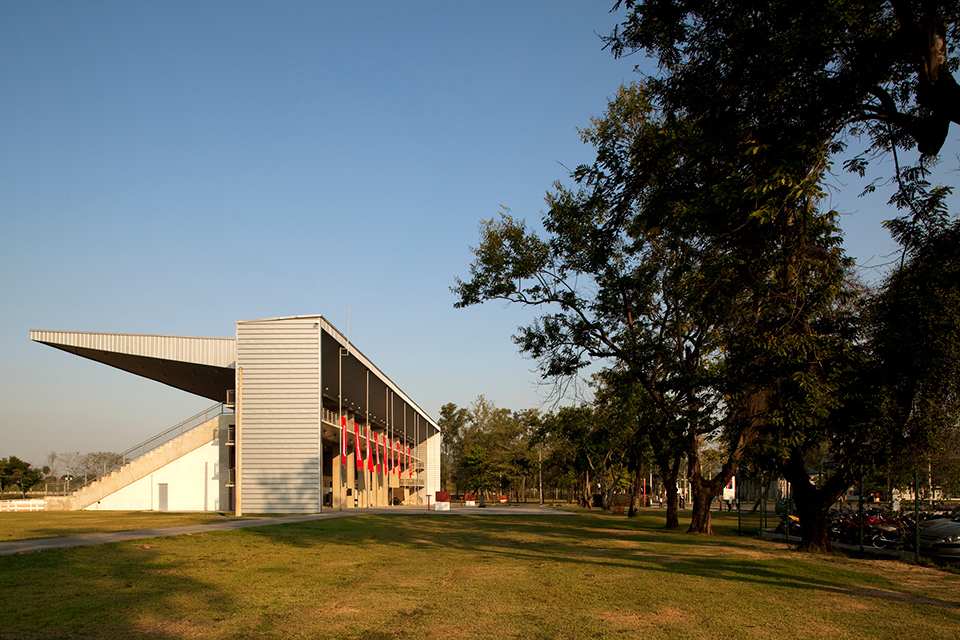
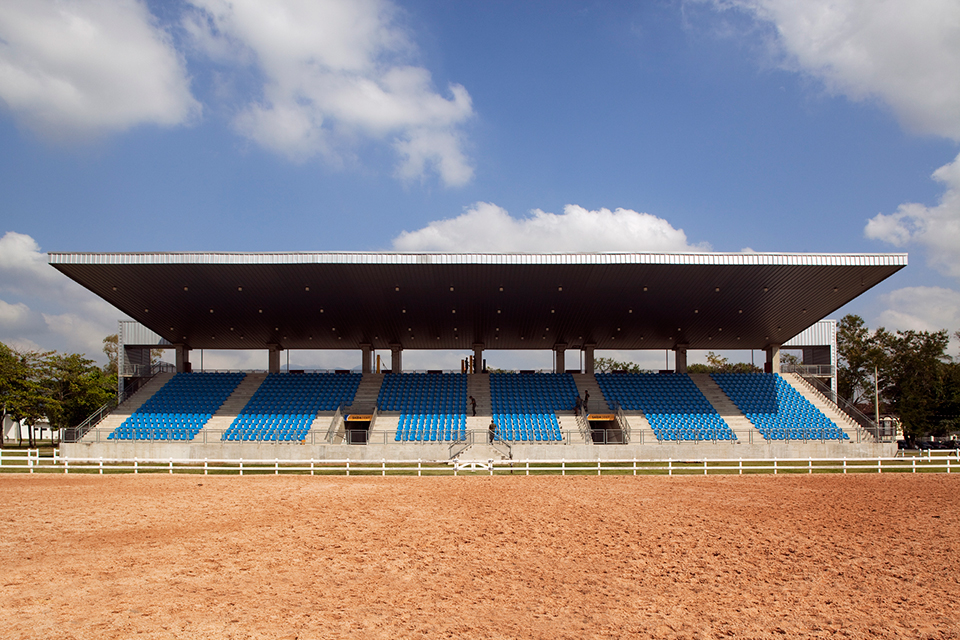
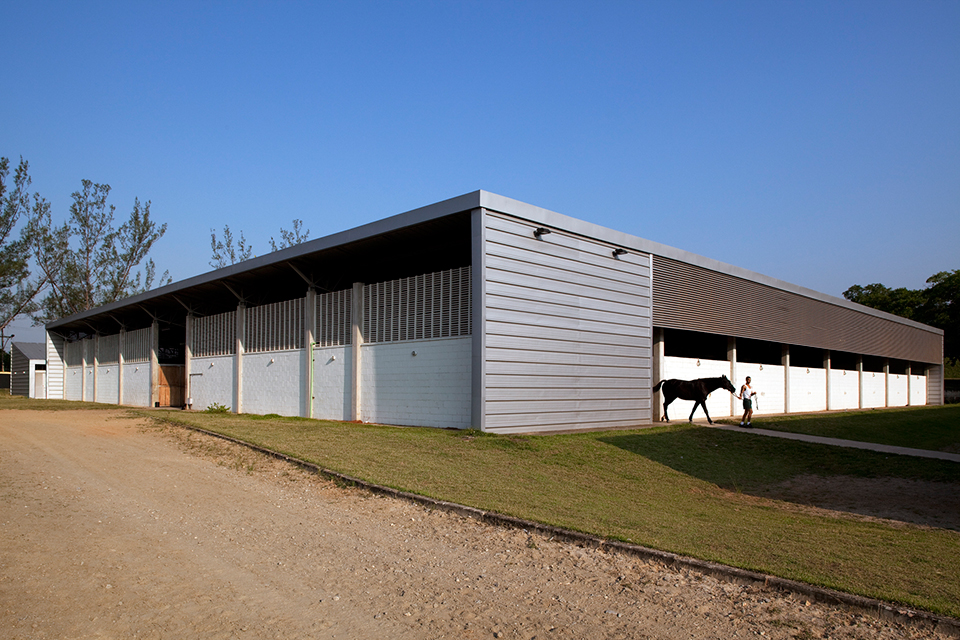
The Deodoro Sports Complex was designed for the 2007 Pan American Games considering, from the start, as its legacy, that the competition venue and program would be appliable to similar competitions – such as the 2016 Olympics.
We sought to minimize the double-function spaces (in other words, spaces that needed to be adapted for the event and that would subsequently take on another function). Thus, the program was defined as a cluster of buildings and definitive equipment that would enable other official competitions to take place there (reginal and world championships, Olympics, etc) as well as ordinary, easy to maintain, day-to-day use (training center, sports school, etc). The temporary installations, which would have their structures and equipment stripped away after the Games, were to be linked to an infrastructure network of accesses and installations to be designed along with the definitive installations, making the complex able to host further sports events in the future.
Therefore, the National Shooting Sport Center, the National Equestrianism Center and the pool from the National Modern Pentathlon Center already meet the requirements for international competitions, and only need small adjustments and additions.
The project deals with complex matters in a unique suburban context, that involves, in the same region, an organized and neatly-planned military neighborhood, a highly dense low-income urban agglomeration, an industrial area amongst middle-class neighborhoods and a vast and exuberant natural landscape. With its new installations and infrastructure betterment, the Deodoro Sports Complex will undoubtedly become a formidable patrimony for high-performance sports practices, stimulating local usage and with the potential to catalyze a general revitalization of a suburban area of great significance to the city.
Equestrianism Center
Besides being a lot bigger than the other areas of the complex, with almost 900.000 m², the Equestianism Center has a greater degree of diversification in its topography and occupation. The area is limited, on the West, by a “favela” formation, a common form of occupation in the Magalhães Bastos neighborhood, characterized by riverside buildings, narrow streets and unfinished houses clumped “shoulder to shoulder”, with no apparent regulation.
For the obstacle jumping competition and the dressage competition there’s the Main Arena, with a sand field oriented to the North through its longitudinal axis, and with the main bleachers facing the East.
This precast concrete structure, with a metallic ceiling suspended for 20 m (capable of sheltering 1.200 people) is nearly identical to the bleachers at the Shooting Sports Center, and it was complemented with temporary bleachers on the remaining sides of the arena during the event (for a total of 5.000).
For the Cross-Country competition, a pathway of approximately 5.700 m was designed, with 40 obstacles designed by a specialist and irrigated grass, besides varied inclinations along the course, located within the available area South of the installations, filled with topographical shifts and denser vegetation.
The remaining training fields are located in available areas between the Main Arena and the stables, where there are eucalypt fields and excavations around an exposed rock formation, complemented with a covered track, taking advantage of the existing area west of the dressage arenas. Finally, we have three new sheds (stables) designed to accommodate 130 horses permanently, with an extra two supporting sheds. These stables are, in practice, almost like a five-star hotel for the animals: thermally isolated roof tiles, shutters to enable natural lighting and ventilation, rubber stands in each one of the bays, internal exercising area and further supporting areas for the competitors and the staff, including a veterinary hospital installation (temporary) located southwest of the Equestrianism Center.
